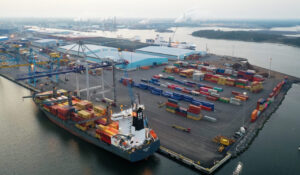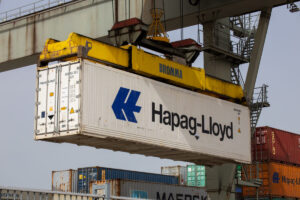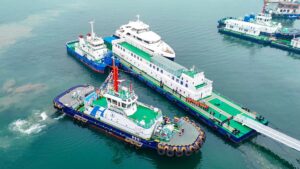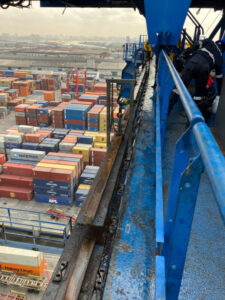Port of Rotterdam has partnered with Hakkers, Van Oord, and De Klerk Binnenbouw B.V. to begin works on of a new tugboat quay in the Yangtzekanaal after the summer.
The choice of this consortium is in line with the Port of Rotterdam’s commitment to sustainable port development.
Hakkers, Van Oord and De Klerk are making the construction site more sustainable by using electric equipment, thereby greatly reducing CO2 emissions during construction.
The tugboat quay will be constructed in the first part of the Yangtzekanaal. This involves widening the navigation path of the Yangtzekanaal on the south side over a length of 500 metres.
READ: Port of Rotterdam, HGK Shipping ink agreement for sustainable inland waterways
The largest container ships use the Yangtzekanaal to sail to and from the APMT 2 and RWG terminals in the Prinses Amaliahaven.
In this part of the port, the Port of Rotterdam is building another 2,400 metres of quay wall for container ships.
This will significantly increase traffic in the Yangtzekanaal.
The Port of Rotterdam also intends to also widen 1,400 metres of the Yangtzekanaal to the west of the existing Antarctica quay before 2030, by constructing a quay wall with waiting berths for inland shipping.
Following dredging work to enhance the depth, extra room will be created to guarantee that the access to Maasvlakte 2 is ready.
READ: Port of Rotterdam launches emission-free shipping project
According to the port authority, tugboats perform an important task within the operational services of the Port of Rotterdam.
They not only tow vessels to their berths, they also ensure that vessels remain at their berths during storms.
Currently, the tugboats are located in the Scheurhaven, Tennesseehaven and Prinses Margriethaven ports, among others.
The main towing services in the port are offered by Boluda Towage, Svitzer and Fairplay. The Yangtzekanaal was created in 2012 when the former Yangtzehaven was dug open.
Since then, the Yangtzekanaal connects the Beerkanaal with the port basins on Maasvlakte 2, thus providing access to the Prinses Amaliahaven, Prinses Arianehaven, Prinses Alexiahaven and other ports.
In May, Port of Rotterdam introduced its first hydrogen-powered inland boxship








